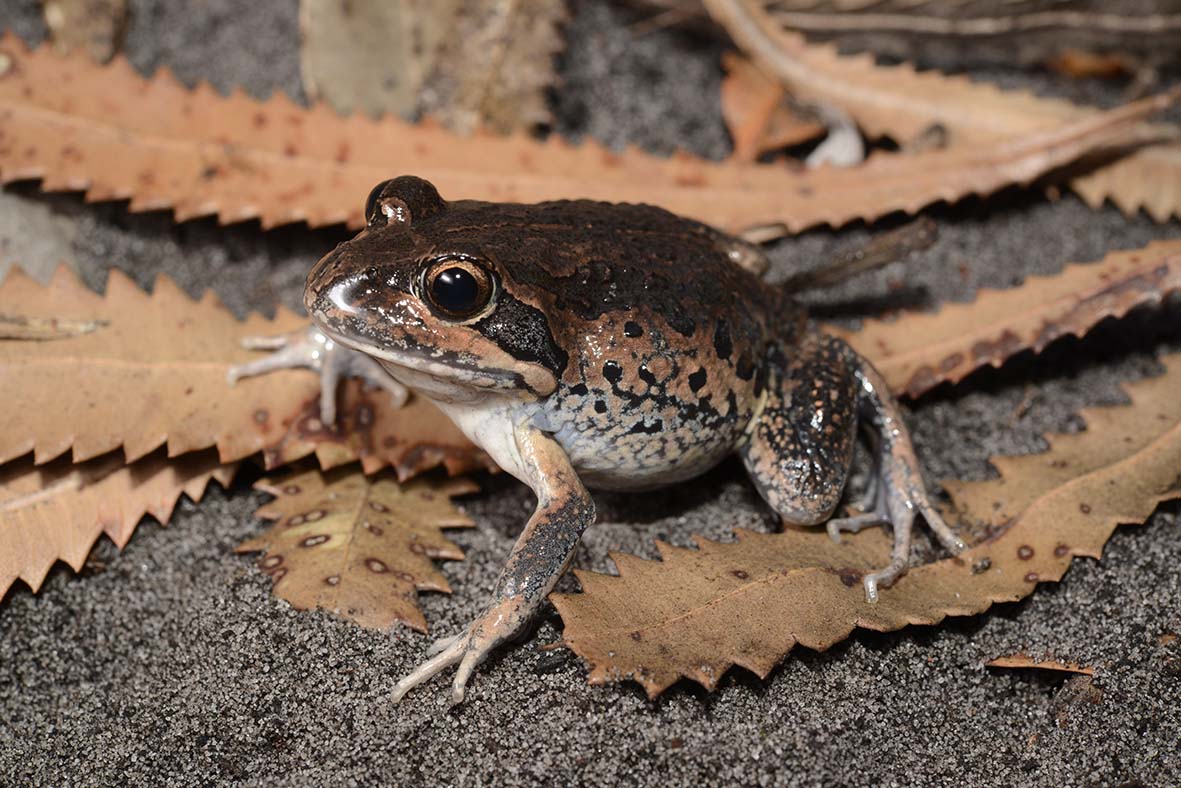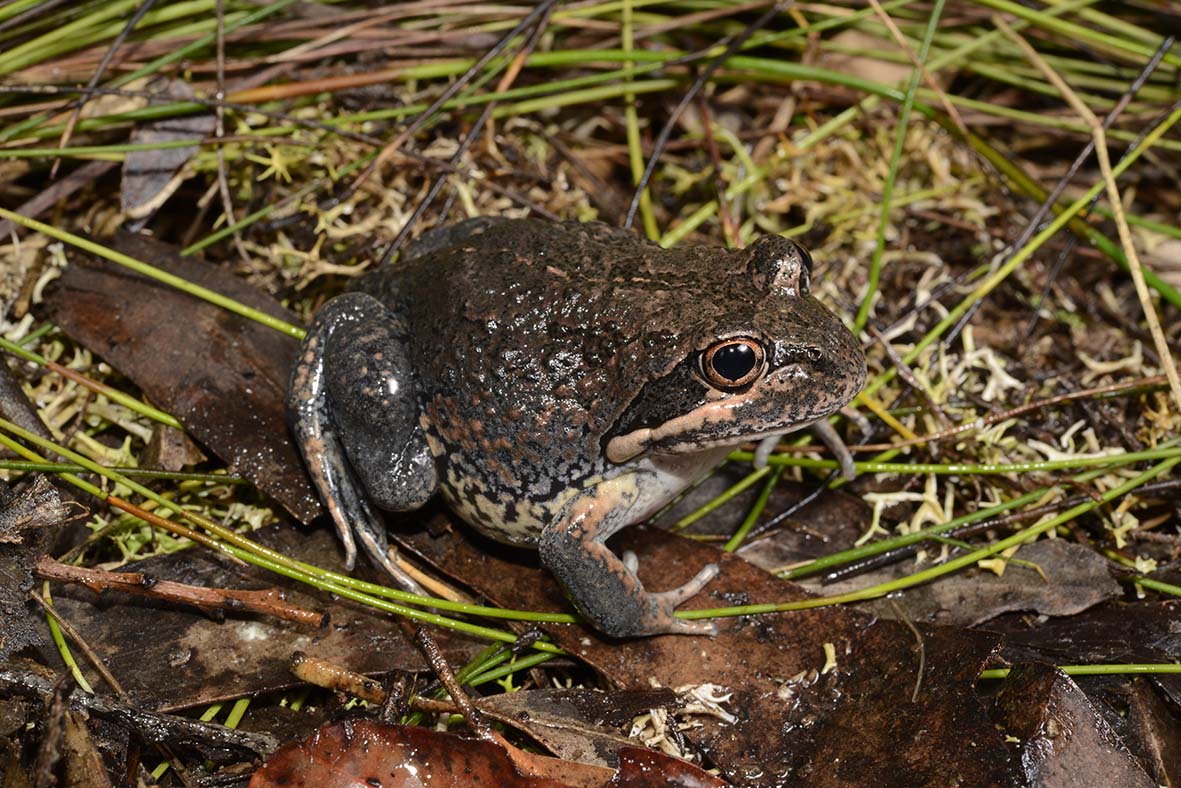Limnodynastes superciliaris
Coastal Banjo Frog
Conservation Status
- EPBC
- Least Concern
- IUCN
- Not Evaluated
Calling Period
Apr
Aug
Dec
Feb
Jan
Jul
Jun
Mar
May
Nov
Oct
Sep
Description
Until recently, this species was considered a subspecies of Limnodynastes dumerilii), but research led by the Australian Museum and published in 2024 has revealed that this species is in fact a distinct species more closely related to Limnodynastes terraereginae and Limnodynastes grayi (which was also part of this research, as it was previously thought to be Limnodynastes terraereginae). FrogID recordings were core to this research.
A relatively small species of Banjo frog reaching up to 6.3 cm in body length. It has a dark to light brown back, typically with longitudinally aligned stripes, blotches or mottling and light brown to cream on the sides with darker spots or mottling. The belly is cream to pearl and lacks any pattern. The pupil is nearly round and the iris is gold. Fingers are unwebbed and toes with only a trace of webbing, both without discs.
Breeding Biology
Eggs are laid as a foamy mass on the surface of ponds, dams, swamps, roadside ditches, and creek pools. Tadpoles can reach a total length of up to 6.5 cm, and are mid to dark-brown in colour. They often remain on the bottom of water bodies and are camouflaged against the substrate, taking around six to nine months to develop into frogs. Breeds during spring to late summer after rain.
Similar Species
Looks similar to Limnodynastes grayi, Limnodynastes dumerilii and Limnodynastes interioris. Limnodynastes superciliaris can be distinguished from Limnodynastes grayi by its smaller size and absence of scarlet blotches in the groin and legs. Limnodynastes superciliaris can be further distinguished from Limnodynastes dumerilii and Limnodynastes interioris by the trace webbing on the hind foot, versus moderate to well-developed webbing in Limnodynastes dumerilii and Limnodynastes interioris.
Images

Photo: Tom Parkin

Photo: Tom Parkin
Calls
By: Tom Parkin